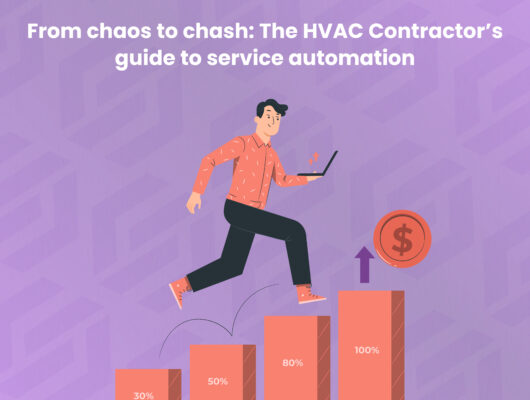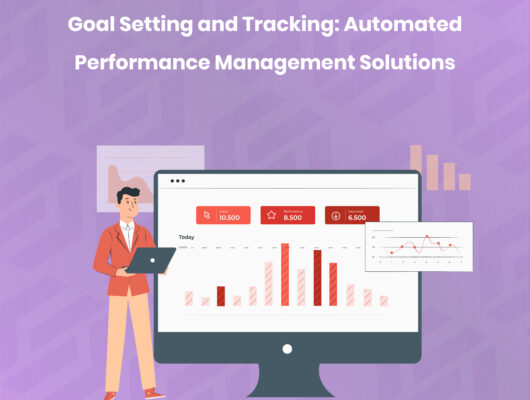It’s 4:47 PM on Thursday. Sarah from HR is frantically calling Marcus, who starts Monday morning. “Hi Marcus, I know you submitted your I-9 form, but the copy was blurry and we can’t read your driver’s license number. Also, we’re missing page 2 of your W-4, and your emergency contact form wasn’t signed. Could you come in Friday to redo everything? Oh, and bring two forms of ID for verification…”
Marcus, who lives 45 minutes away and has a packed Friday schedule, feels his excitement about his new job immediately deflate. This should have been the easy part.
Sound familiar?
This scenario plays out thousands of times daily across organizations worldwide. Despite living in a digital age where we can transfer money instantly, video chat across continents, and access any information in seconds, most companies still rely on paper-based, manual document collection processes that frustrate new hires and overwhelm HR teams.
The statistics are staggering:
- 73% of new hires experience delays due to incomplete or incorrect paperwork
- HR teams spend 6-8 hours per new hire on document collection and processing
- 41% of organizations still use primarily paper-based onboarding processes
- $2,500-$5,000 per hire is lost due to paperwork delays and productivity gaps
But here’s the game-changer: Companies using digital document collection systems report 89% faster paperwork completion, 94% reduction in errors, and 67% improvement in new hire satisfaction during the documentation phase.
The question isn’t whether to digitize your document collection—it’s how quickly you can eliminate the paperwork nightmare that’s damaging your employer brand and wasting valuable resources.
The Paper Trail Crisis: Why Manual Document Collection Fails
The Hidden Costs of Paper-Based Processes
For New Hires: The paperwork experience often sets the tone for an employee’s entire relationship with your organization. When new hires encounter:
- Multiple trips to the office for document submission and correction
- Confusing form requirements with unclear instructions and expectations
- Lost or misplaced paperwork requiring complete resubmission
- Delayed start dates due to incomplete documentation
The result is immediate erosion of excitement and confidence in their decision to join your company.
For HR Teams: Manual document processing creates an administrative burden that scales poorly:
- Physical storage requirements with filing cabinets and document organization systems
- Manual data entry from paper forms into digital HR systems
- Error-prone transcription leading to payroll issues and compliance problems
- Time-consuming verification processes for document authenticity and completeness
For the Organization: Beyond individual frustration, paper-based processes create systemic issues:
- Compliance risks from incomplete or improperly stored documentation
- Audit challenges with difficult-to-access paper records and inconsistent filing
- Security vulnerabilities from physical document storage and transportation
- Scalability limitations that become overwhelming during high-volume hiring periods
The Document Collection Complexity Challenge
Modern employment requires an extensive array of documentation:
Legal and Compliance Requirements:
- I-9 Employment Eligibility Verification with acceptable document copies
- W-4 Federal Tax Withholding forms with state tax equivalents
- State-specific employment authorization and tax documentation
- Workers’ compensation acknowledgments and safety training certifications
Benefits and Personal Information:
- Health insurance enrollment with dependent information and beneficiary designations
- Retirement plan enrollment with investment selections and contribution elections
- Life insurance beneficiary designations and coverage amount elections
- Emergency contact information with relationship verification and contact preferences
Company-Specific Documentation:
- Employee handbook acknowledgments with policy acceptance and understanding verification
- Confidentiality and non-disclosure agreements with industry-specific clauses
- Technology usage policies and security agreement acknowledgments
- Role-specific agreements including non-compete clauses and intellectual property assignments
Industry and Role-Specific Requirements:
- Professional license verification and continuing education tracking
- Security clearance documentation and background check authorization
- Certification copies with expiration date tracking and renewal notifications
- Union membership documentation and dues authorization where applicable
Each document type has specific requirements for completion, verification, and storage—creating a complex web of dependencies that manual processes struggle to manage effectively.
Digital Document Collection Revolution: The Complete Solution
Digital document collection systems transform the entire paperwork experience from a source of friction into a smooth, efficient process that actually enhances the employee experience while dramatically reducing administrative burden.
Core Components of Digital Document Collection
1. Intelligent Form Generation and Delivery Modern systems automatically generate personalized document packages based on:
- Role requirements and department-specific needs
- State and local regulations where the employee will work
- Benefits selections and eligibility criteria
- Security clearance levels and access requirements
2. Guided Completion Experience Rather than presenting employees with intimidating stacks of forms, digital systems provide:
- Step-by-step guidance with plain-language explanations
- Smart field completion that populates related fields automatically
- Real-time validation that catches errors before submission
- Progress tracking so employees know exactly what’s left to complete
3. Secure Upload and Verification Advanced document collection platforms include:
- Mobile-friendly uploading with camera integration for document capture
- Automatic quality checking that ensures documents are readable and complete
- Digital signature collection with legal validity and audit trails
- Identity verification integration for enhanced security and compliance
4. Automated Processing and Integration Once submitted, documents flow seamlessly through:
- Automatic data extraction from uploaded documents into HR systems
- Compliance checking against federal, state, and local requirements
- Approval workflows with appropriate stakeholder routing
- System integration with payroll, benefits, and other business applications
The 5-Stage Digital Document Collection Process
Stage 1: Personalized Document Package Creation
Automated Package Assembly: The moment a new hire accepts an offer, the system automatically assembles their personalized document package based on multiple factors:
Role-Based Requirements:
- Executive positions: Additional disclosure forms, stock option agreements, and advanced confidentiality clauses
- Technical roles: Intellectual property assignments, technology usage agreements, and security clearance documentation
- Customer-facing positions: Background check authorizations, professional appearance guidelines, and customer interaction policies
- Remote workers: Home office setup agreements, internet security requirements, and remote work policy acknowledgments
Location-Specific Compliance:
- Multi-state operations: Automatic selection of appropriate state tax forms and employment law disclosures
- International employees: Visa documentation, tax treaty benefits, and cultural orientation materials
- Union environments: Union membership information, dues authorization, and collective bargaining agreement acknowledgments
- Regulated industries: Industry-specific compliance forms, certification requirements, and regulatory training acknowledgments
Before Digital Implementation:
- HR specialists manually assembled packets for each location and role type
- 34% of new hires received incorrect or incomplete document packages
- Average package assembly time: 45 minutes per new hire
- Document correction rate: 67% due to inappropriate forms
After Automation:
- 100% accurate document packages assembled automatically
- Package assembly time: 30 seconds per new hire
- Document correction rate: 3% (only due to employee completion errors)
- HR specialist time saved: 8 hours per week for redeployment to strategic activities
Stage 2: Interactive Completion Experience
Smart Form Technology: Digital document collection goes far beyond simple PDF forms. Modern platforms provide interactive experiences that guide employees through complex requirements:
Intelligent Field Population:
- Cross-form data sharing: Name and address information entered once populates across all documents
- Dependency management: Selecting “married” on tax forms automatically reveals spouse information fields
- Calculation automation: Tax withholding calculators that recommend optimal selections
- Validation logic: Real-time checking for social security number format, date ranges, and required fields
Contextual Help and Guidance:
- Inline explanations: Click-to-reveal definitions for complex terms like “allowances” or “exemptions”
- Video tutorials: Short, role-specific videos explaining document purposes and completion tips
- Live chat support: Integration with HR support for immediate assistance during completion
- Multi-language support: Form completion in preferred languages with professional translation
Mobile-Optimized Experience:
- Responsive design: Forms that work seamlessly on smartphones and tablets
- Camera integration: Direct photo capture of ID documents and certificates
- Offline capability: Form completion without internet connection with automatic sync when reconnected
- Progress saving: Automatic saving allows completion across multiple sessions
Advanced Features for Complex Documents:
Benefits Enrollment Integration: Rather than separate benefits meetings, digital platforms can include:
- Interactive benefits comparison tools with cost calculators and coverage explanations
- Dependent management with automatic population across health, dental, and life insurance forms
- Decision support tools that recommend optimal selections based on family size, age, and preferences
- Enrollment deadline tracking with automatic reminders and escalation procedures
Compliance Verification:
- I-9 document verification with acceptable document lists and photo capture guidance
- Background check authorization with clear explanations of scope and timelines
- Reference collection with automatic outreach to provided contacts
- Certification verification with direct integration to licensing boards and professional organizations
Stage 3: Document Upload and Verification
Streamlined Upload Process: Gone are the days of scanning, emailing, and hoping documents reach the right person. Modern systems provide:
Multi-Method Upload Options:
- Direct camera capture with automatic cropping and quality enhancement
- File upload from cloud storage services like Google Drive, Dropbox, and OneDrive
- Email integration where employees can simply reply to system emails with document attachments
- Fax integration for organizations that still receive documents via traditional fax systems
Intelligent Quality Control:
- Automatic image enhancement that improves readability of camera-captured documents
- Completeness verification ensuring all required pages and sections are included
- Legibility checking that identifies blurry or unreadable text before acceptance
- Format optimization that converts various file types into standardized, searchable formats
Security and Compliance:
- End-to-end encryption for all document uploads and storage
- Access logging that tracks who views, downloads, or modifies documents
- Retention management with automatic deletion based on legal requirements and company policies
- Backup and disaster recovery ensuring documents are never lost due to technical failures
Traditional Process Issues:
- New hires drove to branch locations to submit paperwork in person
- 28% of document submissions were incomplete or illegible
- Average processing time: 5-7 business days
- Compliance officer spent 15 hours weekly on document verification
Digital Transformation Results:
- 94% of documents submitted digitally within 24 hours of form completion
- Document quality issues reduced to 2% through automatic verification
- Processing time: Same day for 87% of submissions
- Compliance officer time saved: 12 hours weekly for risk management activities
Stage 4: Automated Processing and Integration
Intelligent Data Extraction: Modern digital document collection systems don’t just store documents—they extract actionable data and integrate it throughout your organization:
Optical Character Recognition (OCR) Technology:
- Text extraction from uploaded documents with 99.7% accuracy rates
- Field mapping that automatically populates HR system fields from document content
- Data validation comparing extracted information against form entries for consistency
- Exception handling that flags discrepancies for human review and resolution
Workflow Automation:
- Approval routing based on document type, employee level, and organizational hierarchy
- Stakeholder notifications alerting appropriate team members when action is required
- Deadline management with escalation procedures for time-sensitive documents
- Status tracking providing real-time visibility into processing progress for all stakeholders
System Integration:
- HRIS synchronization ensuring employee records are immediately updated with collected information
- Payroll system integration with tax withholding elections and direct deposit information
- Benefits administration automatic enrollment based on collected elections and dependent information
- Compliance tracking maintaining audit trails and regulatory reporting data
Advanced Processing Features:
Background Check Integration:
- Automatic initiation of background checks upon I-9 completion and authorization
- Status monitoring with real-time updates from screening providers
- Results integration with hiring decision workflows and compliance documentation
- Adverse action handling with automatic generation of required notices and waiting periods
Reference Verification:
- Automated outreach to provided references with structured questionnaires
- Response tracking and follow-up for non-responsive references
- Results compilation into standardized reports for hiring manager review
- Documentation storage maintaining verification records for compliance and audit purposes
Stage 5: Compliance Monitoring and Maintenance
Ongoing Compliance Management: Digital document collection doesn’t end when forms are submitted. Modern systems provide ongoing monitoring and maintenance:
Regulatory Update Management:
- Form version control ensuring the latest federal and state forms are always used
- Automatic updates when tax withholding rates or compliance requirements change
- Historical preservation maintaining records of which form versions were used for each employee
- Transition management smoothly migrating to new requirements while maintaining compliance for existing employees
Audit Readiness:
- Instant report generation for compliance audits and regulatory inquiries
- Document retrieval with powerful search capabilities across all stored documents
- Completeness verification identifying any missing or expired documentation
- Audit trail maintenance showing complete history of document collection, modifications, and access
Proactive Maintenance:
- Expiration monitoring for licenses, certifications, and time-sensitive documents
- Renewal notifications sent to employees and managers before document expiration
- Compliance gap identification highlighting missing or incomplete documentation
- Performance analytics measuring collection efficiency and identifying improvement opportunities
Ready to Eliminate the Paperwork Nightmare?
Digital document collection isn’t just about efficiency—it’s about creating professional, secure, and engaging experiences that set the right tone for new employee relationships. The technology exists today to transform your most frustrating administrative process into a competitive advantage.
Ready to streamline your new hire paperwork with digital document collection? Our HR automation specialists have helped hundreds of companies eliminate paper-based processes, delivering measurable improvements in efficiency, compliance, and employee satisfaction.
Schedule your digital document collection assessment today
Discover how to turn your paperwork process from a source of frustration into a showcase of organizational efficiency.
Don’t let outdated paperwork processes create negative first impressions. Transform document collection into a seamless, digital experience that employees will actually appreciate.






1 Comment